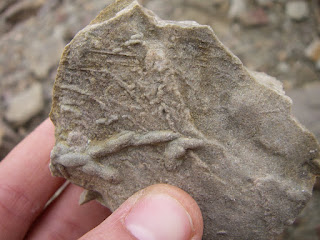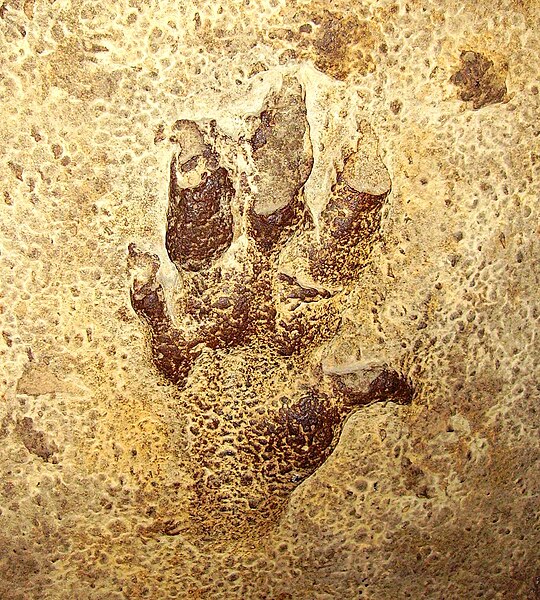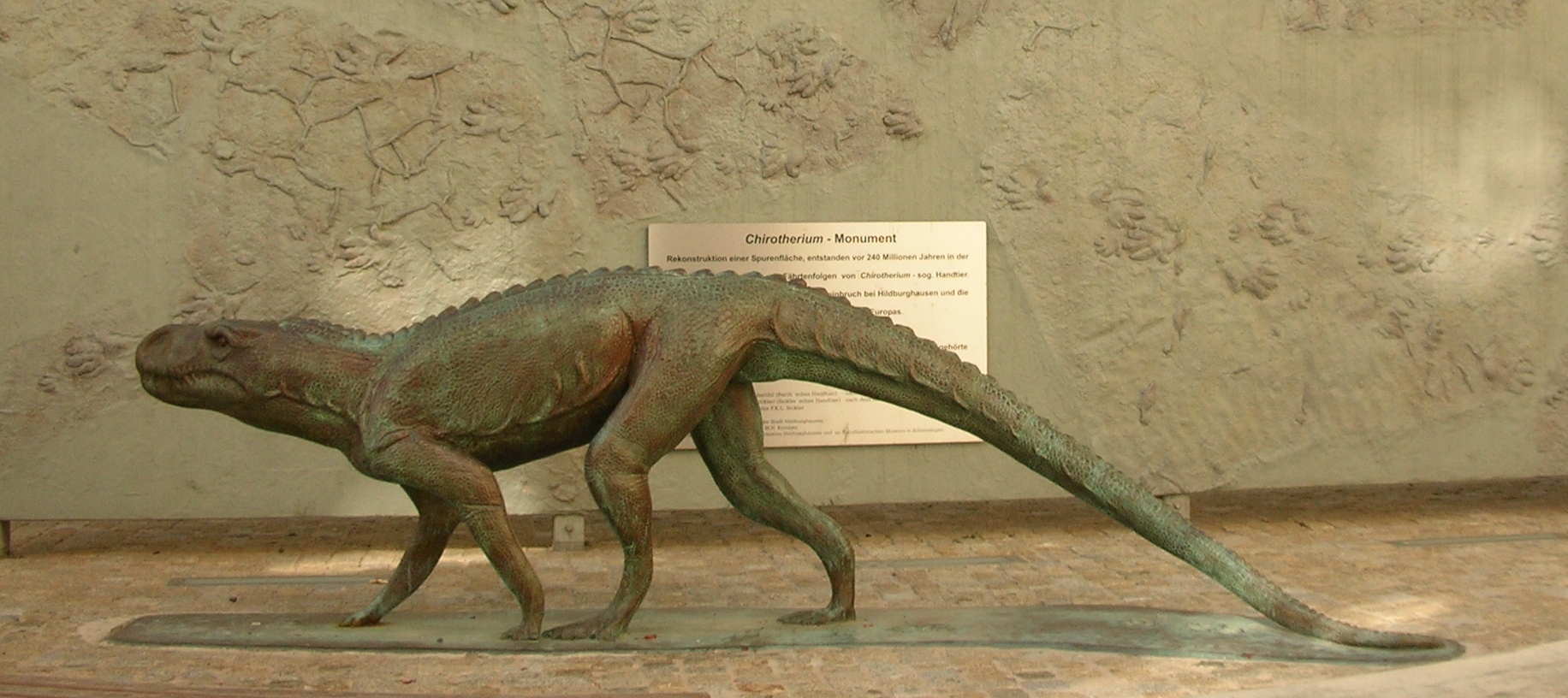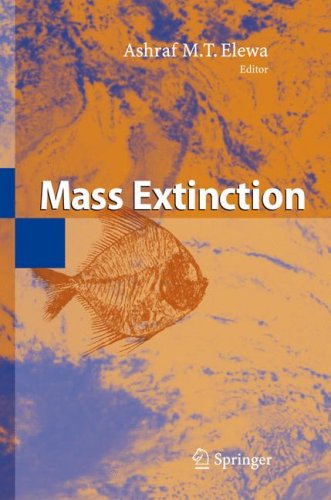The first and most obvious message: The "Cambrian Explosion" is a term describing the sudden appearance of numerous "modern" phyla in the fossil record. Nothing more and nothing less. This statement is, in a way, the lowest common denominator of the CE-research, because it just outlines the plain observation. Some people confuse the sudden appearance with absolute evolutionary progress. This might be true but actually this is just one way to interpret it. Although much research has been devoted, it still remains enigmatic in several concerns. But it has been proven that the appearance of complex organisms in the fossil record is one of the last chain links in a cascade of modifications in the earth system. Steps of such an impact are not "sudden" nor do they result from a single causative event. The Cambrian radiation (I like this term better) has a (even on the geological time scale) long and complex prologue. So when did it really start?
 Fig. 1: What has Christmas to do with the Cambrian Explosion?
Fig. 1: What has Christmas to do with the Cambrian Explosion?
When does Christmas start? Some people may say at first Christmas holiday when the children get up early to receive their gifts. Other (german) people may say: No, it's on Christmas eve already. You see, it is a local phenomena. However, this is not the whole story. You have to go and get a tree, bake cookies, buy and prepare all the food, invite your relatives, tell Santa what to get for your kids, set up the decoration, make everything shiny etc. pp. In Germany, we have all this tradition like the "Weihnachtsmarkt" (Christmas market?), Nikolaus and so on. This stuff probably all belongs to Christmas as same as Santa Claus, presents and the tree at Christmas eve itself, doesn't it? Yes, for sure, but the true point of no return is when your children and all other relatives unwrapped their presents and gifts and everyone is happy with his/her new toy, jewellery, fragrance, shirts, socks, ties etc. The living room is a mess, everyone is drinking wine, the turkey is torn into pieces, your cat is going crazy and over the next days, you will have to go and visit all the other people you missed for the whole year probably. Although these are holidays, everyone is very busy. But as I noted above, there is many stuff going on in the "advent" of this event already. It requires much preparation to make all this happen and if one parameter is missing, it cannot really be Christmas then for some people.
My opinion: If we look at the beautiful fossil lagerstätten like Chengjiang and Burgess Shale, we see the holidays - the very essence of the event, when everyone is busy, has new toys to experiment with and so on. In some concerns this analogue might not be very appropriate but I think it is very instructive and fairly outlines the complexity. From all what we know (and I read), one cannot really say: "here it all started". It was a process.
 Fig. 2: Treptichnus cf. pedum from the lower Middle Cambrian of Jordan. This is not a very typical specimen. We found it during the field session in Jordan. Photo courtesy of G. Mángano.
Fig. 2: Treptichnus cf. pedum from the lower Middle Cambrian of Jordan. This is not a very typical specimen. We found it during the field session in Jordan. Photo courtesy of G. Mángano. So now back to the actual business. What is the role of ichnology here? As I noted above, the most simple message is that some trace fossils are so complex that their creation requires sophisticated nervous systems and locomotory mechanisms as well as some sort of motivation (= behaviour). Accordingly, trace fossils demonstrate that there were animals, which did match all this characteristics, already before some of them passed into the body fossil record. Therefore, the first really complex trace fossil
Treptichnus pedum (fig. 2; for taxonomists: some people prefer
Trichophycus pedum, originally described as
Phycodes pedum, Seilacher 1955) was chosen to define
the base of the Cambrian.
T. pedum is an array of alternating banana-shaped burrows that have been created within the sediment. To describe it properly, all three spatial dimensions are needed. Thus, it is a true burrow created by a bilateral-symmetrical animal. In other words, the trace maker had a left and a right side, it had a sense for "up" and "down" and it probably possessed an aperture for all incomings and one for the rest. Older trace fossil assemblages from the Ediacaran are characterised by the presence of horizontal traces only. Typical strategies employed by Ediacaran biota are surface scratchings, horizontal (under-)mat mining, rather unspecialised superficial grazings and something like that. Around the Precambrian-Cambrian-transition, the discovery of the third dimension by benthic organisms had tremendous impact on the environment and the whole face of the earth.
 Fig. 3. Cartoon illustrating the 'Agronomic Revolution'.
Fig. 3. Cartoon illustrating the 'Agronomic Revolution'.
From Fedonkin et al. 2007. Drawing by Peter Trusler.
I think there is an error at the lower right. It should be "phanerozoic mixgrounds".
What has been very instructively termed by Seilacher (1997) as the "Agronomic Revolution" or "Trophic Escalation", illustrates the fundamental changes across the the pC-C-transition (see fig. 3). First of all, there is a new strategy as demonstrated by deep vertical burrows (
Skolithos, Monocriterion, Arenicolites, Teichichnus to name a few): Infaunalisation. Animals appreciated to colonise the sediment column, which is in fact really advantageous because it provides protection from abiotic and biotic stress factors. Furthermore they were able to explore new food sources. (1) Infaunal detritus feeding: Think of the wasted resources in the Ediacaran. Plenty of organic matter that just has been buried beneath sticky algal mats. (2) Suspension feeding: No matter how strong bottom currents are, just evert your feeding apparatus and current will do the rest without disturbing you in your nice burrow. (3) Passive predation: Wait in your hole for a prey that strolls along your burrow. All in all a very progressive strategy. This biotic invention didn't change only the ecological conditions significantly. It affected whole chemical fluxes in the entire ocean. All the soluble components like phosphate, calcium, silica, magnesium re-entered the marine chemical cycle by deep and thorough bioturbation at the expense of mat-sealed sediment-water interfaces. The composition of sea water presumably changed completely. This, in turn, most likely made the subsequent biomineralisation event possible altogether. This fundamental modification was in a way the advent of the big party that is recorded by the terminal Lower Cambrian fossil lagerstätten.
Further complication? Here we go: Jensen (2003) subsumed that rise of trace fossil complexity is not just documented from the lowermost Cambrian. He stated, and convincingly demonstrated that the "Neoproterozoic trace fossils represent the initiation of a rapid but gradual build-up of infaunal activity, which increased markedly in the Cambrian". Furthermore he concludes that the presence of some distinct trace fossil (e.g.
Spiroraphe) together with Ediacaran forms suggests that the evolution of bilateral animals is already under way. So when did the so called "Cambrian Explosion" start? You know what? I really do n't know.
Some key resources for this topic are: Seilacher (1956), Seilacher (1974), Crimes (1992), Droser et al. (2002) as already noted Jensen (2003), Seilacher et al. (2005). This story is by far not completely told yet and, in fact, the evaluation of trace fossils in connection with the CE is still a hot frontier in geo/biosciences.
References:Crimes, T.P., 1992: Changes in the trace fossil biota across the Proterozoic-Phanerozoic boundary. J. geol. Soc. London., vol. 149, pp. 637–646
Droser, M.L., Jensen, S., Gehling, J.G., 2002: Trace fossils and substrates of the terminal Proterozoic–Cambrian transition: Implications for the record of early bilaterians and sediment mixing. PNAS, vol 99. no 20, pp. 12572-12576.
Fedonkin, M.A., Gehling, J.G., Grey, K., Narbonne, G.M., Vickers-Rich, P., 2007: The rise of animals. Evolution and Diversivication of the Kindgom Animalia. Johns Hopkins University Press, Baltimore.
Jensen, S., 2003: The Proterozoic and Earliest Cambrian Trace Fossil Record; Patterns, Problems and Perspectives. Integr. Comp. Biol., vol. 43, pp. 219–228.
Seilacher, A., 1955. 4. Spuren und Fazies im Unterkambrium. In: Schindewolf, O.H., Seilacher, A. (Eds.), Beitrage zur Kenntnis des Kambriums in der Salt Range (Pakistan), Akademie der Wissenschaften und der Literatur zu Mainz, Mathematisch-naturwissenschaftliche Klasse, Abhandlungen, vol. 10, pp. 373 – 399.
Seilacher, A., 1956. Der Beginn des Kambriums als biologische Wende. Neues Jahrbuch fur Geologie und Palaontologie, Abhandlungen 103, pp. 155–180.
Seilacher, A., 1997: Fossil Art. Royal Tyrell Museum of Palaeontology, Drumheller, Alberta, 64 p.
Seilacher, A., Buatois, L.A., Mángano, M.G., 2005: Trace fossils in the Ediacaran–Cambrian transition: Behavioral diversification, ecological turnover and environmental shift. Palaeogeography, Palaeoclimatology, Palaeoecology, vol. 227, pp. 323–356.


 Chirotherium (pes imprint) from the Triassic of Germany.
Chirotherium (pes imprint) from the Triassic of Germany.  The "Chirotherium Monument" with a reconstructed "hand beast" (Hildburghausen, Germany)
The "Chirotherium Monument" with a reconstructed "hand beast" (Hildburghausen, Germany) Fig. 2: Treptichnus cf. pedum from the lower Middle Cambrian of Jordan. This is not a very typical specimen. We found it during the field session in Jordan. Photo courtesy of G. Mángano.
Fig. 2: Treptichnus cf. pedum from the lower Middle Cambrian of Jordan. This is not a very typical specimen. We found it during the field session in Jordan. Photo courtesy of G. Mángano.  Fig. 3. Cartoon illustrating the 'Agronomic Revolution'.
Fig. 3. Cartoon illustrating the 'Agronomic Revolution'. Elewa, Ashraf M. T. (ed.), 2008: Mass extinction. Springer
Elewa, Ashraf M. T. (ed.), 2008: Mass extinction. Springer This is Pyramid Mountain. Although it looks like a typical cinder cone, it is proven to have been formed beneath a remarkable glacial cover. However, the eruption was presumably vigorous but short. Accordingly, this volcano lacks the flat-topped Tuya-morphology that is expected for subglacial volcanoes. The volcanic activity of this particular region spans from the Pleistocene to the Holocene.
This is Pyramid Mountain. Although it looks like a typical cinder cone, it is proven to have been formed beneath a remarkable glacial cover. However, the eruption was presumably vigorous but short. Accordingly, this volcano lacks the flat-topped Tuya-morphology that is expected for subglacial volcanoes. The volcanic activity of this particular region spans from the Pleistocene to the Holocene. Close-up of the same outcrop. The flow dircetion is hardly to identify. In the upper third you see a fairly lenticular body. This might represent a lava flow perpendicular to the cliff-face. However, all "beds" are quite parallel and very regular.
Close-up of the same outcrop. The flow dircetion is hardly to identify. In the upper third you see a fairly lenticular body. This might represent a lava flow perpendicular to the cliff-face. However, all "beds" are quite parallel and very regular.  Me being happy with a hard-earned sundae. At my place in Saskatoon, I watched TV sometimes and always got tempted by stupid but effictve (as you see) commercials from Diary Queen. They always showed sundae copulating with fudge, cream, chocolate chunks and so on. Accordingly, I decided that I won't leave Canada without plundering a DQ. What could I say - was worth it.
Me being happy with a hard-earned sundae. At my place in Saskatoon, I watched TV sometimes and always got tempted by stupid but effictve (as you see) commercials from Diary Queen. They always showed sundae copulating with fudge, cream, chocolate chunks and so on. Accordingly, I decided that I won't leave Canada without plundering a DQ. What could I say - was worth it.